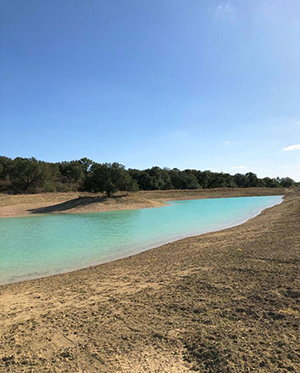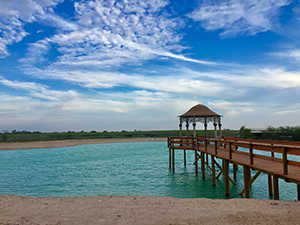How to Seal a Pond Naturally with Sodium Bentonite

Wondering how to seal a pond naturally so that it is protected from water leaks? Sodium bentonite offers the perfect solution for small and large ponds. Its unique properties, such as the high swelling capacity to fill cracks and prevent leaks, are highly useful for sealing ponds.
If you are looking for sodium bentonite in Texas, look no further than Southwestern Materials. We offer high-quality sodium bentonite that gets the job done, ensuring watertight sealing for your pond project. For more information on our sodium bentonite clay products, contact us at 888-600-6077 or request a quote online.
How to Seal a Pond Naturally Using Sodium Bentonite: A Guide

Transforming your pond into a thriving aquatic ecosystem and preventing leaks now and in the future requires a solid foundation. Sodium bentonite provides precisely that. Here are the steps on how to seal a pond naturally using sodium bentonite:
- Prepare the Surface: What is the first step when learning how to seal a pond naturally? The answer is laying the foundation. If you are constructing a new pond, start by removing the debris, vegetation, and any large or sharp objects to create a smooth surface. Smooth out rough surfaces and address any uneven areas or leakages. This preparation sets the stage for effective pond sealing using sodium bentonite.
- Pick the Right Sodium Bentonite: Sodium bentonite comes in different forms, such as powdered sodium bentonite, granular sodium bentonite, pelletized sodium bentonite, and many more. Each of these is ideal for different applications. No matter which product you choose, select high-quality sodium bentonite for sealing effectiveness.
- Determine the Amount of Sodium Bentonite Required: Before you begin the application, estimate the amount of sodium bentonite required based on the depth and size of your pond. For initial sealing, the amount of sodium bentonite required is around 1 to 2 pounds per square foot. As the layers increase, more amount of sodium bentonite is required for sealing. The basic formula to calculate the total amount of sodium bentonite required for pond sealing is Pond area (square foot) * Application rate (in pounds per square foot).
- Distribute the Sodium Bentonite: Ensure to distribute the sodium bentonite evenly across the pond surface. To do that, use machines like tractors to mix bentonite with the soil.
- Hydrate the Sodium Bentonite. After distributing the bentonite evenly, hydrate the material to ensure an even seal. Introduce water slowly to the bentonite layer so that it swells. As it swells, the sealing becomes stronger and fills the cracks, effectively preventing water leakage.
- Test the Sealing: Next, pour water into the pond and check for any signs of leakages. If there are leaks, hydrate the sodium bentonite a bit more or additional bentonite pond sealant application may be necessary. Apart from testing, monitor the water levels as well. Monitoring the water levels in the pond is necessary to assess the effectiveness of the sealing.
- Allow the Sodium Bentonite to Settle: Leave the bentonite for days or weeks to settle. Meanwhile, avoid doing any activity otherwise, it disrupts the sealing process.
By following the steps outlined here and employing proper techniques, you can learn how to seal a pond naturally.
Contact Us to Learn More About Sealing a Pond Naturally with Sodium Bentonite
This guide successfully outlines the steps on how to seal a pond naturally using sodium bentonite. If you are in the Texas area and are seeking assistance with pond sealing using sodium bentonite, our experts are here to help. Request a quote for bulk bentonite clay delivery today and take the first step toward securing your pond's integrity.










